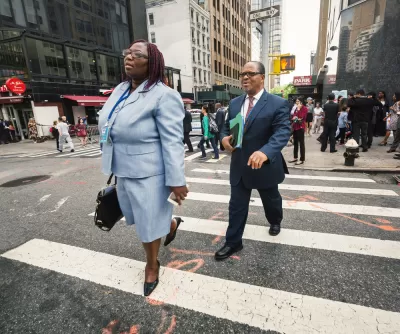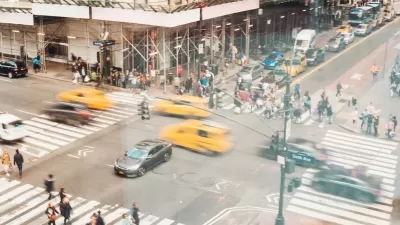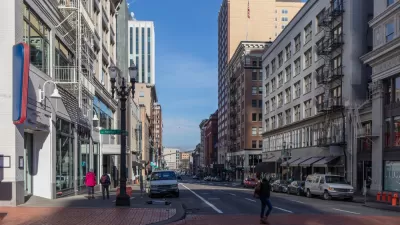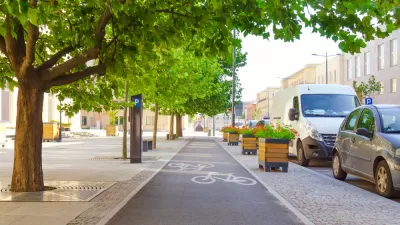Data from New York City show that traffic safety projects that give pedestrians the most space are the most effective in reducing fatal crashes and injuries.

“New data published by the New York City Department of Transportation adds to a growing body of evidence about which interventions most effectively reduce traffic deaths and serious injuries.” In an article for Governing, Jared Brey describes the projects that had the biggest effect on street safety.
“The data show substantial reductions in serious injuries and fatalities for all roadway users resulting from street improvement projects like road diets, pedestrian islands, curb and sidewalk extensions, and leading pedestrian intervals — all on the order of 30 percent or more.” Brey adds that turn calming and protected bike lanes also had an impact of 15 percent of more.
The study, originally undertaken to analyze the effect of interventions on senior citizens, was broadened to include all road users. Brey notes that “Injury data specifically for cyclists were not included in the study, though a separate 2021 report looked at the impact of street interventions on risks for bikers.”
According to the study, projects that give pedestrians more space show the best results. “Another important takeaway was that conventional bike lanes, which involve little more than paint, did result in significantly fewer deaths and serious injuries.” While protected bike lanes help more, all designated bike lanes seem to have some effect on reducing dangerous crashes.
According to Beth Osborne, director of Transportation for America and vice president of transportation and thriving communities for Smart Growth America, New York City should serve as a model for planning, implementing, and then studying the results of traffic calming projects. “The tragedy is NYC DOT is a standout. We almost never check on what state DOTs or city DOTs promise.”
FULL STORY: What Are the Best Safe-Streets Improvements?

Trump Administration Could Effectively End Housing Voucher Program
Federal officials are eyeing major cuts to the Section 8 program that helps millions of low-income households pay rent.

Planetizen Federal Action Tracker
A weekly monitor of how Trump’s orders and actions are impacting planners and planning in America.

Ken Jennings Launches Transit Web Series
The Jeopardy champ wants you to ride public transit.

Washington Legislature Passes Rent Increase Cap
A bill that caps rent increases at 7 percent plus inflation is headed to the governor’s desk.

From Planning to Action: How LA County Is Rethinking Climate Resilience
Chief Sustainability Officer Rita Kampalath outlines the County’s shift from planning to implementation in its climate resilience efforts, emphasizing cross-departmental coordination, updated recovery strategies, and the need for flexible funding.

New Mexico Aging Department Commits to Helping Seniors Age ‘In Place’ and ‘Autonomously’ in New Draft Plan
As New Mexico’s population of seniors continues to grow, the state’s aging department is proposing expanded initiatives to help seniors maintain their autonomy while also supporting family caregivers.
Urban Design for Planners 1: Software Tools
This six-course series explores essential urban design concepts using open source software and equips planners with the tools they need to participate fully in the urban design process.
Planning for Universal Design
Learn the tools for implementing Universal Design in planning regulations.
Heyer Gruel & Associates PA
Ada County Highway District
Institute for Housing and Urban Development Studies (IHS)
City of Grandview
Harvard GSD Executive Education
Toledo-Lucas County Plan Commissions
Salt Lake City
NYU Wagner Graduate School of Public Service





























